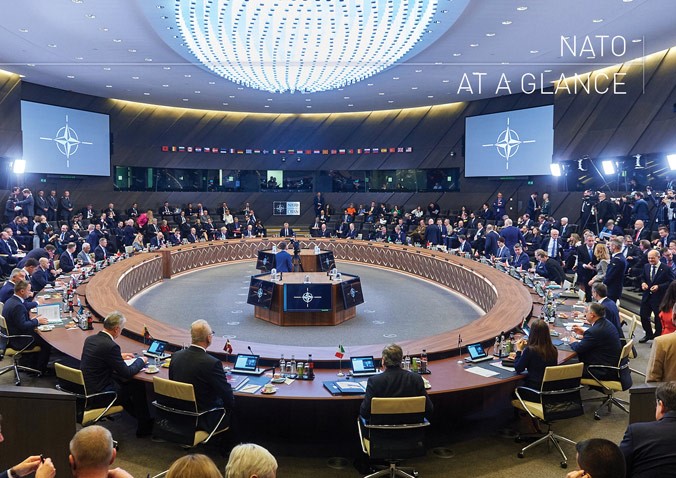NATO Secretary General Jens Stoltenberg has released the alliance’s latest annual report. It clearly reveals the impact Putin’s invasion of Ukraine has had on what is frequently described as history’s most successful defensive grouping. It also airs his frustration in dealing with Moscow.
“For more than 30 years, NATO tried to build a partnership with Russia. Despite this, over the past decade, Russia has continuously violated the norms and principles that contributed to a stable and predictable European security order. Russia’s brutal and unlawful war of aggression against Ukraine in February 2022 has shattered peace and gravely altered the security environment. In light of its hostile policies and actions, NATO cannot consider Russia to be a partner.”
Stoltenberg makes a point that has been all too often ignored when discussing the crisis.
“This war did not start in 2022, it started in 2014, when Russia illegally annexed Crimea and entered eastern Ukraine. Since then, NATO Allies have trained tens of thousands of Ukrainian soldiers and supported its defence and security sector. NATO will continue to stand by Ukraine for as long as it takes.”
The Secretary General emphasized the alliance’s timely response, noting that within hours of the current invasion, NATO’s response eventually placed over 40,000 troops in the eastern part of the Alliance, backed by substantial capabilities in the air and at sea. The alliance doubled the number of battlegroups, from four to eight. Additionally, NATO increased its military presence from the Baltic to the Black Sea, on the land, at sea and in the air. Since the invasion, NATO Allies provided around $120 billion of military, humanitarian and financial assistance in 2022. While the United States is the largest single contributor, Europe and Canada provided over half of the overall assistance. Europeans also welcomed almost five million refugees from Ukraine.
Eastern members of the alliance, especially Poland, Latvia, Lithuania and Estonia have been the most emphatic in the need to respond forcefully to Putin’s aggression.
The alliance’s “New Strategic Concept,” formulated at a meeting in Madrid last year, identifies Russia as the most significant and direct threat to its security, but also addresses the People’s Republic of China for the first time, and it sets out how it can address other challenges like the ongoing threat of terrorism, as well as cyber, hybrid, and new technologies.
The next major gathering of the group will take place in Vilnius, the capital of Lithuania, in July 2023Stoltenberg expects the allies will agree a new more ambitious defense spending pledge. In a more dangerous world, Allies increasingly see 2% of Gross Domestic Product spent on defense as a floor and not a ceiling. During his tenure, President Trump urged NATO members to increase their defense spending. From 2021 to 2022, defense spending increased by 2.2% in real terms. In total, over the last eight years, this increase added $350 billion for defense. In 2022, seven Allies met the guideline of spending 2% of their Gross Domestic Product on defense. In 2014, only three Allies met the guideline. The United States accounted for 54% of the Allies’ combined GDP and 70% of combined defence expenditure. Total NATO military spending in 2022 was estimated to exceed $1trillion.
Stoltenberg emphasizes that “The new baseline builds on the ongoing military adaptation efforts, including the full and speedy implementation and operationalisation of two high-level military concepts – the Concept for the Deterrence and Defence of the Euro-Atlantic Area and the NATO Warfighting Capstone Concept. The Concept for the Deterrence and Defence of the Euro-Atlantic Area focuses on force employment to deter and defend today, while the NATO Warfighting Capstone Concept offers a vision to guide the Alliance’s long-term warfare development to remain militarily strong now and in the future.”
Photo: Meeting of the North Atlantic Council at the level of NATO Heads of State and Government during the extraordinary Summit following the onset of the Russian invasion of Ukraine. Brussels, Belgium, March 2022. (NATO photo)
